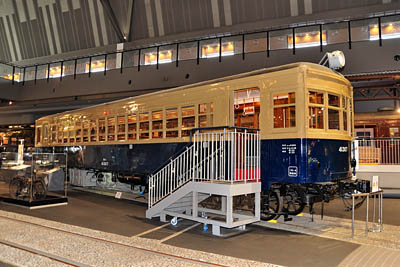
Diesel Car
Class
|
The first Japanese domestically mass-produced internal-combustion railcar. (Ki = Diesel (internal-combustion) Railcar , Ha = 3rd passenger class (later 2nd class) |

|
|
Japanese internal-combustion car history was started during 1928. That first internal-combustion car was completed during 1929, and was named the KiHaNi-5000. KiHaNi-5000 was a 10 meter long single-unit gasoline engine mechanized type car, and twelve were manufactured. Afterward, the government railway produced the Gasoline-Electric type Class KiHaNi-36450 car. It's electric motor generated electricity from the gasoline engine generator. But, the cars had a ready-made engine loaded on the trailer car, so it's weight was too heavy. Additionally, during that time, Japanese internal-combustion engine technology was low, and their performance was not good.
KiHa-41000s were deployed to many local lines, but their passenger carrying capacity was inadequate. However, pre-WW2's internal-combustion car development saw little increase, because of war fuel shortages. After the war, internal-combustion car development began with diesel engine utilization. The reason for that was, gasoline engines had high risk, because many people were killed during an accident at Osaka during 1940 with a Gasoline-Car. But, frustration still existed, because of the oil shortage.
During December 1948, Natural gas localities at Chiba and Niigata, developed eleven KiHa 41000s, which were remodeled for Natural-Gas. They were named the Class KiHa-41200 (No.41200-41211) But later, during 1952, they were again remodeled as a Diesel-engine model, and were named the Class 41300 No.41300-41311. Class 41300 was renamed to Class KiHa-04 No.1-12, when class names were revised during 1957. After the war, a lot of Series-KiHa-41300s were transferred to private railways. In regard to the Japanese National Railway, they were retired by 1966.
|
|
Preserved car KiHa-41307 (1934 - 1987)
The Museum's KiHa-41307 was manufactured at the Kawasaki-Sharyo Co. and was completed on the 30th of January, 1934, as a Gasoline-Engine car Class KiHa-41000 No.41056. After its inception, the KiHa-41056 was active mainly on the Koumi line, in the Nagano area. During December, 1948, she was remodeled as a Natural-Gas engine at the Nagano workshop, and was renamed, the Class KiHa-41200 No.41207. During November 1952, she was again replaced as a Diesel engine at the Nagano workshop, and was renamed, the Class KiHa-41300 No.41307. During April 1957, KiHa-41307 was renamed to the Class KiHa-04 No.8 as a class name revision. On the 11th of January, 1958, she was retired at the Nakagomi depot, and was sold to the Enshu-Tetsudo Co. When she was sold to the Enshu-Tetsudo, the KiHa-04 No.8 was renamed as the Enshu-Tetsudo's KiHa-802. Enshu-Tetsudo was already electrified, but diesel-cars were still needed because the JNR Futamata line was none-electrified and now required straight through service. During 1967, KiHa-802 was sold to the Hokuriku-Tetsudo Co. with KiHa-801 and 803. During that time, KiHa-802's engine was replaced by the new Hydraulic Torque Converter Diesel engine, and was named the KiHa-5211. During 1972, Hokuriku-Tetsudo Co was closed and KiHa-5211 was transferred to the Kanto-Tesudo Co. Tsukuba line (after Tsukuba-Tetsudo) with KiHa-5212. KiHa-5211 was named the Tsukuba-Tetsudo's KiHa-461. During 1977, she was retired from regular service, and was kept at the Makabe depot as a backup. During 1987, Tsukuba-Tetsudo was closed and also KiHa-461 was retired. Afterward, she was returned for painting and numbering as KiHa04-8, as she was, when she was originally retired during the JNR years, and was exhibited at the Sakura Transportation Park in Tsukuba city, Ibaragi prefecture. During 2007, she was restored to the original shape of the KiHa-41307 and was moved to the Saitama Museum.
|
Introduction |
Go to Top |